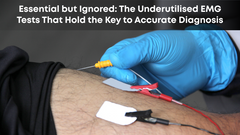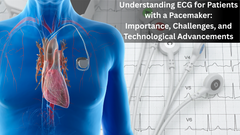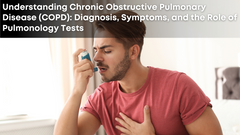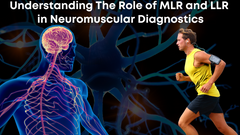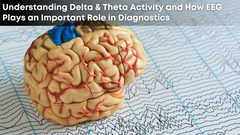Remote Patient Monitoring in Community Health Centers : Addressing Challenges and Embracing Innovation
Community Health Centers (CHCs) play a vital role in providing primary care services to underserved populations, offering a lifeline to individuals who may otherwise struggle to access healthcare. However, these centers often face significant challenges, including staffing shortages and limited resources. In recent years, the advent of Remote Patient Monitoring (RPM) technology has emerged as a promising solution to enhance the delivery of care in community health settings.
What are Community Health Centers (CHCs)?
Community Health Centers (CHCs) are non-profit healthcare facilities that provide comprehensive primary care services to underserved communities, including low-income individuals, uninsured or underinsured populations, and those living in rural or medically underserved areas. These centers offer a wide range of services, including preventive care, chronic disease management, dental care, behavioral health services, and more. CHCs are often federally funded and governed by a community board, ensuring that services are tailored to meet the unique needs of the local population.
Challenges Faced by Community Health Centers:
Despite their invaluable contributions to public health, CHCs encounter several challenges that can hinder their ability to deliver high-quality care:
> Shortage of Healthcare Providers: Many CHCs struggle with staffing shortages, including a lack of primary care physicians, nurses, and other healthcare professionals. This shortage can lead to increased wait times for appointments and limited access to care for patients.
> Financial Constraints: CHCs often operate on limited budgets, relying on a combination of federal funding, grants, and patient fees to sustain their operations. Financial constraints can impact the availability of resources, including medical equipment, medications, and support services.
> Barriers to Access: For individuals living in rural or medically underserved areas, transportation barriers and limited access to healthcare facilities can pose significant challenges. CHCs may be the only source of primary care within a community, making it essential to overcome these barriers to ensure access to care for all residents.
> Chronic Disease Management: Managing chronic conditions such as diabetes, hypertension, and heart disease requires ongoing monitoring and support. CHCs may face challenges in providing comprehensive care for patients with complex medical needs, leading to gaps in disease management and prevention efforts.
Remote Patient Monitoring Technology: A Powerful Solution for CHCs
Remote Patient Monitoring (RPM) technology offers a transformative solution to several challenges faced by CHCs, empowering healthcare providers to deliver more accessible, efficient, and patient-centered care:
> Continuous Monitoring of Vital Signs: RPM technology enables healthcare providers to remotely monitor patients' vital signs, including blood pressure, heart rate, oxygen saturation, and blood glucose levels. This real-time data allows for early detection of changes in health status and proactive intervention when necessary.
> Improved Chronic Disease Management: For patients with chronic conditions, RPM technology facilitates ongoing monitoring and management outside of traditional healthcare settings. Patients can use wearable devices or home monitoring equipment to track their health metrics, empowering them to take an active role in their care and adhere to treatment plans.
> Reduced Hospital Readmissions: By providing continuous monitoring and timely interventions, RPM technology has been shown to reduce hospital readmissions and emergency department visits among high-risk patients. This not only improves patient outcomes but also helps to alleviate strain on healthcare resources and reduce healthcare costs.
> Enhanced Access to Care: RPM technology extends the reach of healthcare services beyond the confines of the traditional clinic setting, making care more accessible to individuals in remote or underserved areas. Patients can receive personalized care and support from the comfort of their own homes, eliminating barriers to access and improving overall health outcomes.
How Promising is RPM in Global Healthcare?
The rise of Remote Patient Monitoring (RPM) technology has sparked considerable interest and enthusiasm within the global healthcare community, with experts recognizing its potential to revolutionize care delivery and improve patient outcomes on a global scale. Some key benefits and implications of RPM in global healthcare include:
> Expanding Access to Care: RPM technology has the potential to bridge geographical barriers and extend access to healthcare services to underserved populations worldwide, including rural communities, developing countries, and areas with limited healthcare infrastructure.
> Empowering Patients: By empowering patients to actively participate in their own care through self-monitoring and remote communication with healthcare providers, RPM technology promotes patient engagement, autonomy, and empowerment.
> Optimizing Resource Utilization: In resource-constrained settings, RPM technology can help optimize the use of healthcare resources by reducing unnecessary hospitalizations, emergency department visits, and healthcare expenditures. This, in turn, allows healthcare systems to allocate resources more efficiently and effectively.
> Facilitating Population Health Management: RPM technology enables healthcare providers to collect and analyze real-time data on patient populations, facilitating population health management initiatives, identifying trends and patterns, and implementing targeted interventions to improve overall health outcomes.
Clarity Medical's Remote Patient Monitoring Solution:
Clarity Medical's Remote Patient Monitoring solution is a comprehensive platform designed to meet the unique needs of community health centers and other healthcare providers. Key features and capabilities of Clarity Medical's RPM solution include:
> User-Friendly Interface: Clarity Medical's RPM solution features an intuitive and user-friendly interface, making it easy for healthcare providers to monitor patients, review data, and communicate with patients remotely.
> Easy integration: Seamless integration with a wide range of devices and solution, allowing patients to transmit vital sign data directly to their healthcare providers in real-time.
> Customizable Alerts and Notifications: Clarity Medical's RPM solution enables healthcare providers to set customized alerts and notifications based on predefined parameters, ensuring timely intervention and proactive management of high-risk patients.
> Secure Data Transmission: Patient data is transmitted securely through encrypted channels, ensuring patient privacy and compliance with regulatory.





